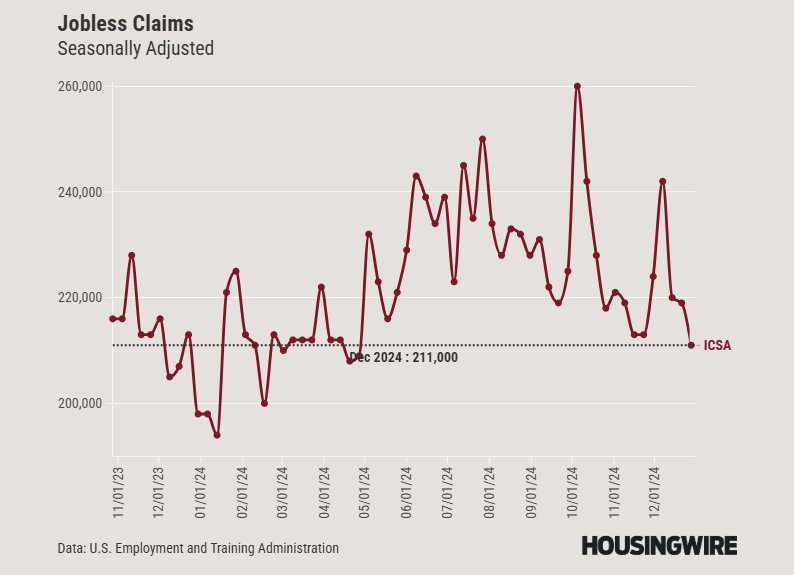Today, the jobless claims data again showed why mortgage rates continue to be elevated, confirming that the labor market isn’t breaking. The labor market is getting softer but hasn’t broken yet, as it has before every recession post World War II.
Mortgage rates have remained mostly in a range over the past two years, fluctuating between 6% and 8%. In late 2022, global markets faced turmoil and economic indicators suggested a weakening economy, leading the 10-year yield to drop to around 3.37% before rebounding. This was my “Gandalf line in the sand” because I believed the 10-year yield couldn’t head lower since labor wasn’t breaking.
In 2023, the Fed continued to hike rates. When they eventually stopped hiking it created another key level for me in 2024 — the “hold the door” line of 3.80%. We held that line very late in the year 2023.
In 2024, as the labor market showed weakness, the 10-year yield fell, briefly, below that 3.80% level. This broke after three softer reports in jobs week pushed the 10-year yield down to 3.62%. However, that concern dissipated when jobless claims began to decline again.
As we can see from today’s data, jobless claims came in better than expected, causing the 10-year yield to rise by a few basis points. As I am writing this, the 10-year yield is at 4.59%, rising three basis points after the positive claims data.
My forecast for 2025 includes these projected ranges for mortgage rates and the 10-year yield. It’s important to note that with improved mortgage spreads in 2024, we experienced better mortgage pricing.
- Mortgage rates are expected to range between 5.75% and 7.25%.
- The 10-year yield is projected to be between 3.80% and 4.70%
For mortgage rates to go lower, we need to focus on the labor market, which has been critical to every economic cycle in recent history, and particularly the labor market for residential construction and remodeling.
The existing home sales market has been in a recession since June 16, 2022, and hasn’t experienced any significant growth in sales for some time. However, the labor market for those working in the existing home sales market isn’t substantial enough to impact an economy, since it is a sector that revolves around a transfer of commission.
In contrast, housing construction plays a more pivotal role in economic cycles. As payroll growth slows and becomes more concentrated, this sector can cool off the economy enough to raise the unemployment rate above 4.3%, which is the Fed’s comfort level. As shown in the chart below, housing construction and remodeling labor typically declines before any recession, and historically, the Fed tends to overlook this data line before the recession. I wrote about this topic last week after the most recent new home sales report.
You don’t necessarily need to experience a job loss recession for mortgage rates to drop toward 6%, as we’ve seen in 2023 and 2024. However, some implied softness in the economy or improved mortgage spreads is essential, both of which we saw in 2024. If this trend continues into 2025, getting rates near 6% will become easier.
Jobs week is next week and we’ll see the final report for 2024. One sector to watch in 2025 is housing starts and employment for construction workers. Even a slight decline in job growth data could push the unemployment rate above 4.3%. Additionally, improved mortgage spreads may result in lower interest rates for an extended period.
For mortgage rates to drop below 5.75% (the lower end of our HousingWire 2025 Housing Market forecast), which would greatly benefit the housing market, several factors must be aligned. We need to see a softening in labor data, overall economic growth to remain below 3%, improved mortgage spreads, or the Federal Reserve to recognize the situation and take action to support the housing market.
The Fed should proactively address the issue of declining construction labor as it arises. Last year, we experienced one negative residential labor report when mortgage rates were at 7.5%. This was followed by a drop to around 6%, which helped boost housing demand. History has shown that housing issues are often overlooked, but I hope that the Fed will recognize the importance of being proactive this time around.






